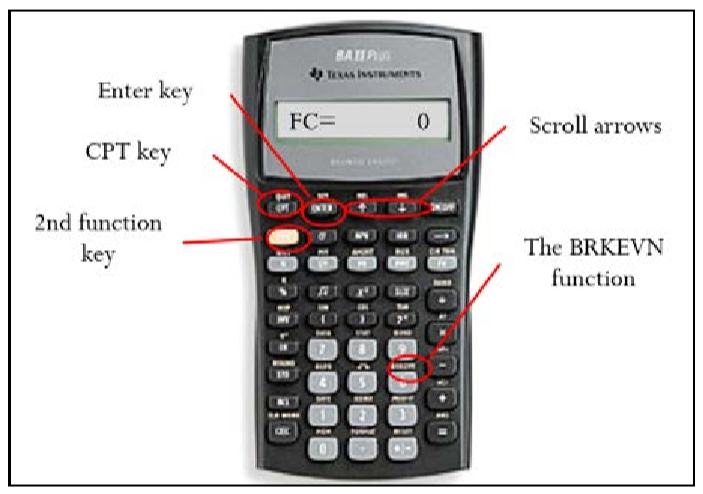5.S: Marketing and Accounting Fundamentals (Summary)
- Page ID
- 22092
Key Concepts Summary
5.1: Cost-Revenue-Net Income Analysis (Need to Be in the Know)
- The three different types of costs
- How to determine the unit variable cost
- Calculating net income when you know total revenue and total cost
- Calculating net income when you know the contribution margin
- Comparing varying contribution margins by calculating a contribution rate
- Integrating all of the concepts together
5.2: Break-Even Analysis (Sink or Swim)
- Explanation of break-even analysis
- How to calculate the break-even point expressed in the level of output
- How to calculate the break-even point expressed in total revenue dollars
The Language of Business Mathematics
- blended cost
-
A cost that comprises both fixed cost and variable cost components.
- break-even analysis
-
An analysis of the relationship between costs, revenues, and net income with the sole purpose of determining the point at which total revenue equals total cost.
- break-even point
-
A quantity that represents the level of output (in units or dollars) at which all costs are paid but no profits are earned, resulting in a net income equal to zero.
- contribution margin
-
The amount each unit sold adds to the net income of the business.
- contribution rate
-
A contribution margin expressed as a percentage of the selling price.
- cost
-
An outlay of money required to produce, acquire, or maintain a product, which includes both physical goods and services.
- economies of scale
-
The principle that, as production levels rise, per-unit variable costs tend to become lower as efficiencies are achieved.
- fixed cost
-
A cost that does not change with the level of production or sales.
- net income
-
The amount of money left over after all costs are deducted from all revenues.
- total fixed cost
-
The sum of all fixed costs that a business incurs.
- total cost
-
The sum of all costs for the company, including both the total fixed costs and total variable costs.
- total revenue
-
The entire amount of money received by a company for selling its product, calculated by multiplying the quantity sold by the selling price.
- total variable cost
-
The sum of all variable costs that a business incurs at a particular level of output.
- unit variable cost
-
The assignment of total variable costs on a per-unit basis.
- variable cost
-
A cost that changes with the level of production or sales.
The Formulas You Need to Know
Symbols Used
\(CM\) = unit contribution margin
\(CR\) = contribution rate
\(n\) = number of pieces of data, which in this chapter is the level of output
\(NI\) = net income
\(S\) = unit selling price of the product
\(TFC\) = total fixed cost
\(TR\) = total revenue
\(TVC\) = total variable cost
\(VC\) = unit variable cost
Formulas Introduced
Formula 5.1 Unit Variable Cost: \(VC=\dfrac{TVC}{n}\)
Formula 5.2 Net Income Using a Total Revenue and Cost Approach: \(NI=n(S)-(TFC+n(VC))\)
Formula 5.3 Unit Contribution Margin: \(CM=S-VC\)
Formula 5.4 Net Income Using Total Contribution Margin Approach: \(NI=n(CM)-TFC\)
Formula 5.5 Contribution Rate if Unit Information Is Known: \(CR=\dfrac{CM}{S} \times 100\)
Formula 5.6 Contribution Rate if Aggregate Information Is Known: \(CR=\dfrac{TR-TVC}{TR} \times 100\)
Formula 5.7 Unit Break-Even: \(n=\dfrac{TFC}{CM}\)
Formula 5.8 Dollar Break-Even: \(TR=\dfrac{TFC}{CR}\)
Technology
Calculator

Net Income or Break-Even
- 2nd Brkevn to open the function
- To clear the memory before entering any data, press 2nd CLR Work after opening the function. Use and to scroll through the function.
- Enter four of the following variables and press Enter after each to save:
\(FC\) = Total fixed costs
\(VC\) = Unit variable cost
\(P\) = Selling price per unit
\(PFT\) = Net income
\(Q\)= Level of output
- Press CPT on the unknown variable (when it is on the screen display) to compute.


